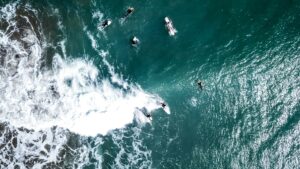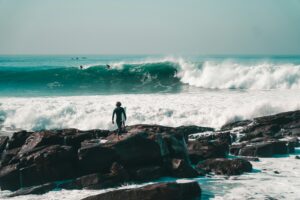Noosa, on Australia’s East Coast, is a renowned surfing destination, with waves as legendary as they are long–protected forever by the Noosa National Park. Home to three world-class points and a scattering of fun golden sand beachies, it’s no surprise Noosa has produced some top surfing talent, most notably, former CT veteran, Julian Wilson. Here’s everything you need to know about surfing in Noosa.
Overview
- Perfect right points
- Warm year-round
- Beautiful area
- Crowds
- Flat spells
Table of Contents
Best Time of Year
The best time of year to surf in Noosa is between January and April. This is when cyclone swells spin down from Fiji, and send swell to the Queensland coast. During large cyclone events, Noosa transforms from a mellow longboarding spot into one of the longest waves in the world, where multiple sections join together for some truly leg-burning rides.
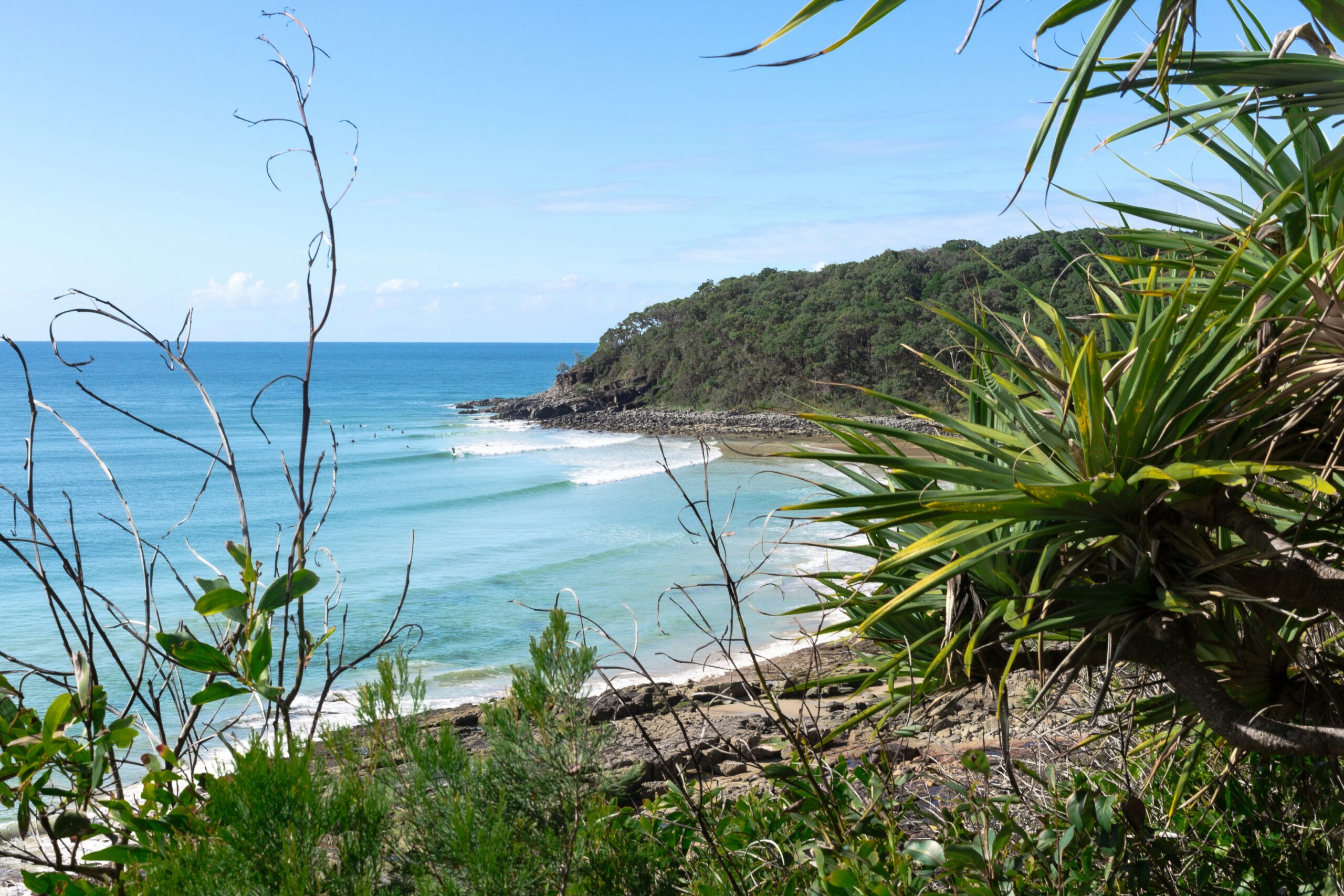
Noosa Surf Spots
First Point
Before reaching Noosa National Park, you have Main Beach and First Point. This is the first of the Noosa points, and the least swell exposed. It’s always the smallest and is mostly a super mellow longboarding wave. Only the largest swells will produce waves bigger than chest-high.
Boiling Pot, Nationals & Little Cove
The next part of the Noosa Points is a series of sections, that only join together on the biggest cyclone swells. Boiling Pot at the top is a hollow, freight train barrel on its day, which then runs for hundreds of metres, spinning and sucking off the sand. The manner in which they break will depend on the sandbanks at the time.
It runs through Nationals, Johnsons, and Little Cove. Sometimes, you can ride a wave from Pot, all the way through to Main Beach–a ride of almost 1km. Boiling Pot is a 20-minute walk from Main Beach.
Tea Tree
Tea Tree is a beautiful wave. On the right day, the take-off is a behind-the-rock slab, often plagued with backwash, but then the wave opens up into a stunning canvas for turns. On the inside, it gets even more flawless as it doubles up across the sand bar. One of the most enjoyable waves I have ever surfed. Best at low tide and is comparable to Barra de la Cruz in Mexico. Tea Tree is a 30-minute walk from Main Beach.
Granites
Granites is the furthest out of the Noosa Poitns and therefore the most swell exposed and consistent. The waves here might lack the perfection of Tea Tree or Pot, nevertheless, the place can offer super fun, leg-burners. While you’d like to think the long walk to the end of the National Park would put a few people off, it doesn’t, Granites is just as crowded as the other points. A 45-minute walk from Main Beach.
Sunshine Beach
Sunshine Beach is considered the go-to beach break in the area. It faces due east and picks up any swell running, so when it’s too small for the points, Sunshine Beach should be your port of call. You might have to drive up and down it to find the best banks, but usually, in the northern corner, you’ll find punchy left wedges breaking off the headland.

Getting There
Getting to Noosa is straightforward. Fly into Brisbane International Airport if you’re coming from overseas, then make the 2.5-hour drive north. Or if you’re coming from elsewhere in Australia, fly to Sunshine Coast Airport, and Noosa is around a 45-minute drive away.
Getting Around
By Car
Having a car is ideal for surfing in Noosa, as you’ll have the flexibility to nip between the beach, town, and Sunshine Beach depending on the surf. Grab a rental car from the airport via Discover Cars.
By Public Transport
If you can’t drive, a car isn’t essential in Noosa. Thankfully there’s a decent, surfboard-friendly bus network that can get you between Sunshine Beach and the points. Journeys cost a couple of dollars. This is what I did when I was 18 on my first trip to Australia. I stayed at Sunshine Beach, then just caught the bus to Main Beach whenever the swell jumped.
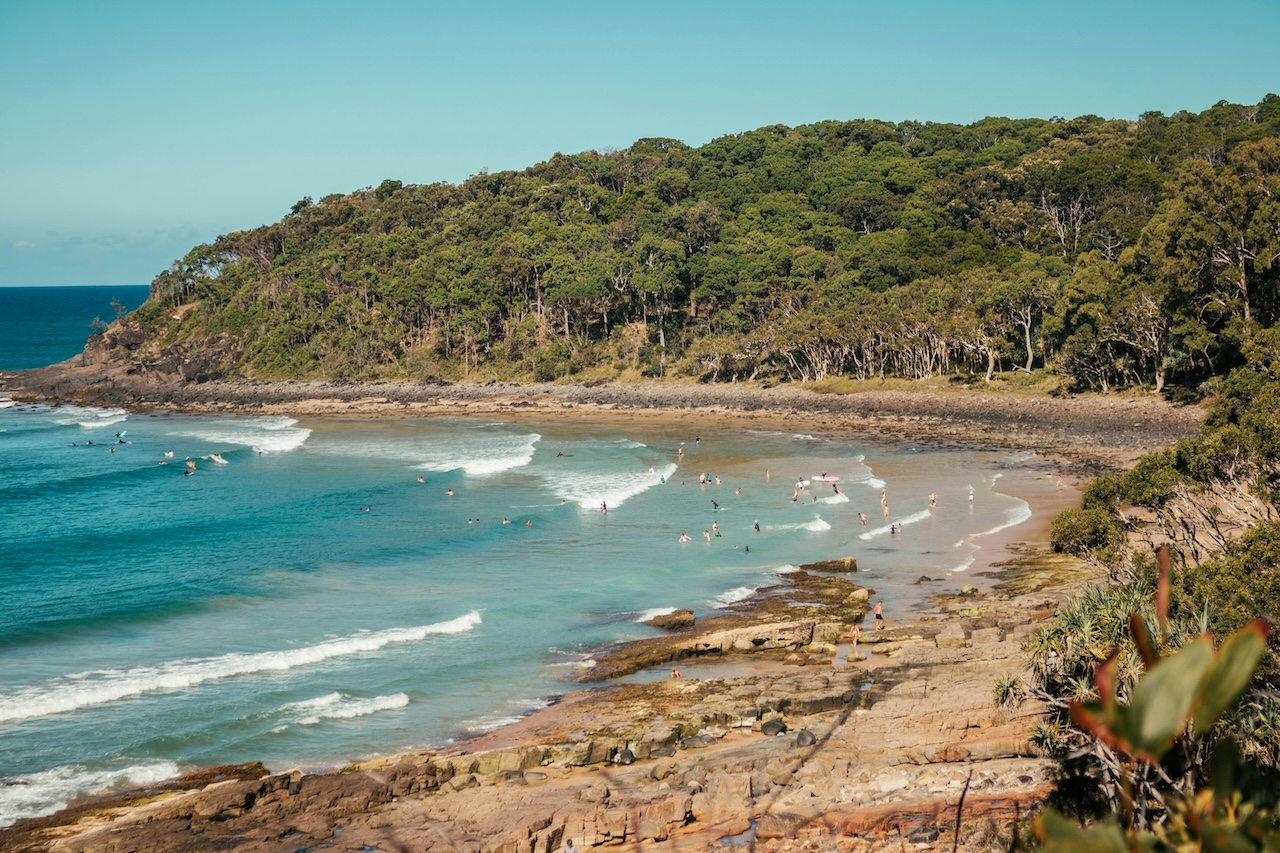
Where to Stay?
Dolphins Backpackers
Dolphins is where I stayed during my first surf trip to Australia. For $30 per night, you’ve got a dorm room, right on Sunshine Beach. It’s nothing glamorous, but you’ll be next to a cluster of small shops and restaurants, and Sunshine Beach. Check out Dolphins here.
Nomads
Nomads is another cheap and cheerful place to stay with a lively nightlife scene. 5 minutes from Main Beach, with dorm rooms from $35 per night for a dormitory. Check out Nomads here.
Tips for Surfing in Noosa
Cyclones
Surfing in Noosa is all about the cyclones. Essentially, you’re just waiting for the biggest swells to hit the coast and that’s your best chance of scoring the famous points. Usually the bigger the better. Cyclone season is January – March.
Consistency
Unusually, Noosa can go flat during winter. This is because Stradbroke Island dilutes much of the South Swell that’s somewhere such as the Gold Coast receives and so Noosa is much less consistent and is prone to flat swells. In summer, most swells come from the east so it ends up being more consistent.
Crowds
As you’d expect, the crowds in Noosa are next level. Comparable to Snapper on the Goldie, or Trestles in California, there’s no escaping it. If the points are firing you’ll be sharing the lineup with hundreds of other surfers. You’ve just got to get amongst it and get your hustle on.
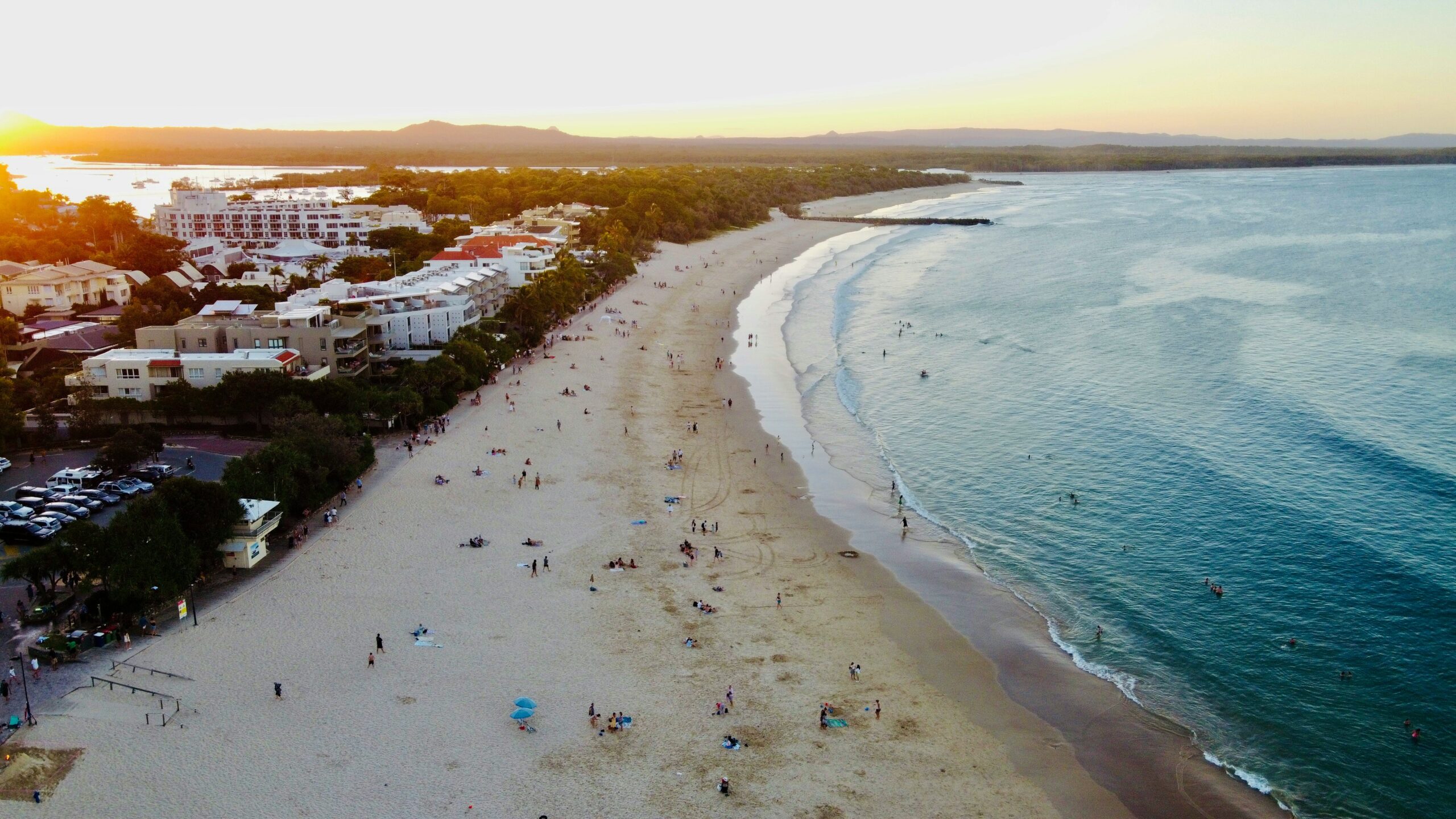
Australia - Travel Information
Flight Times:
- LAX – BNE: 14h 45m
- SYD – BNE: 1h 30m
- LHR – BNE: 21h 40m
Visas: 3-month visa on arrival and working holiday visa
Currency: $AUD
Language: English
Final Words
If you’re looking for perfect right-hand points, few places in the world pack in so many of them in such a short distance. While you might have to wait for a swell, stick it out and you might just get the longest wave of your life if you can get one of the crowd. For more information on surfing in Noosa, please comment below.


